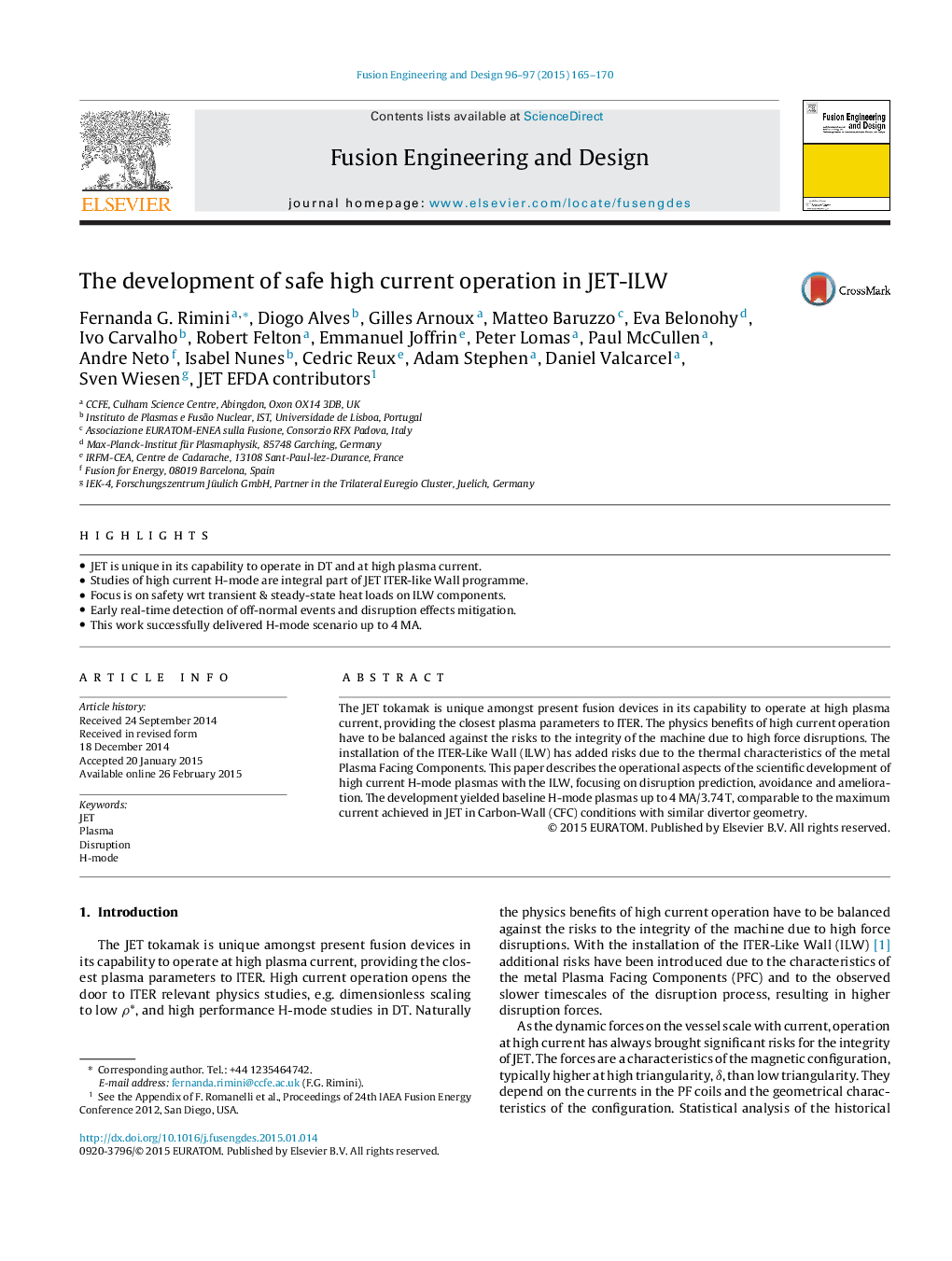| Article ID | Journal | Published Year | Pages | File Type |
|---|---|---|---|---|
| 6745846 | Fusion Engineering and Design | 2015 | 6 Pages |
Abstract
The JET tokamak is unique amongst present fusion devices in its capability to operate at high plasma current, providing the closest plasma parameters to ITER. The physics benefits of high current operation have to be balanced against the risks to the integrity of the machine due to high force disruptions. The installation of the ITER-Like Wall (ILW) has added risks due to the thermal characteristics of the metal Plasma Facing Components. This paper describes the operational aspects of the scientific development of high current H-mode plasmas with the ILW, focusing on disruption prediction, avoidance and amelioration. The development yielded baseline H-mode plasmas up to 4Â MA/3.74Â T, comparable to the maximum current achieved in JET in Carbon-Wall (CFC) conditions with similar divertor geometry.
Keywords
Related Topics
Physical Sciences and Engineering
Energy
Energy Engineering and Power Technology
Authors
Fernanda G. Rimini, Diogo Alves, Gilles Arnoux, Matteo Baruzzo, Eva Belonohy, Ivo Carvalho, Robert Felton, Emmanuel Joffrin, Peter Lomas, Paul McCullen, Andre Neto, Isabel Nunes, Cedric Reux, Adam Stephen, Daniel Valcarcel, Sven Wiesen,
